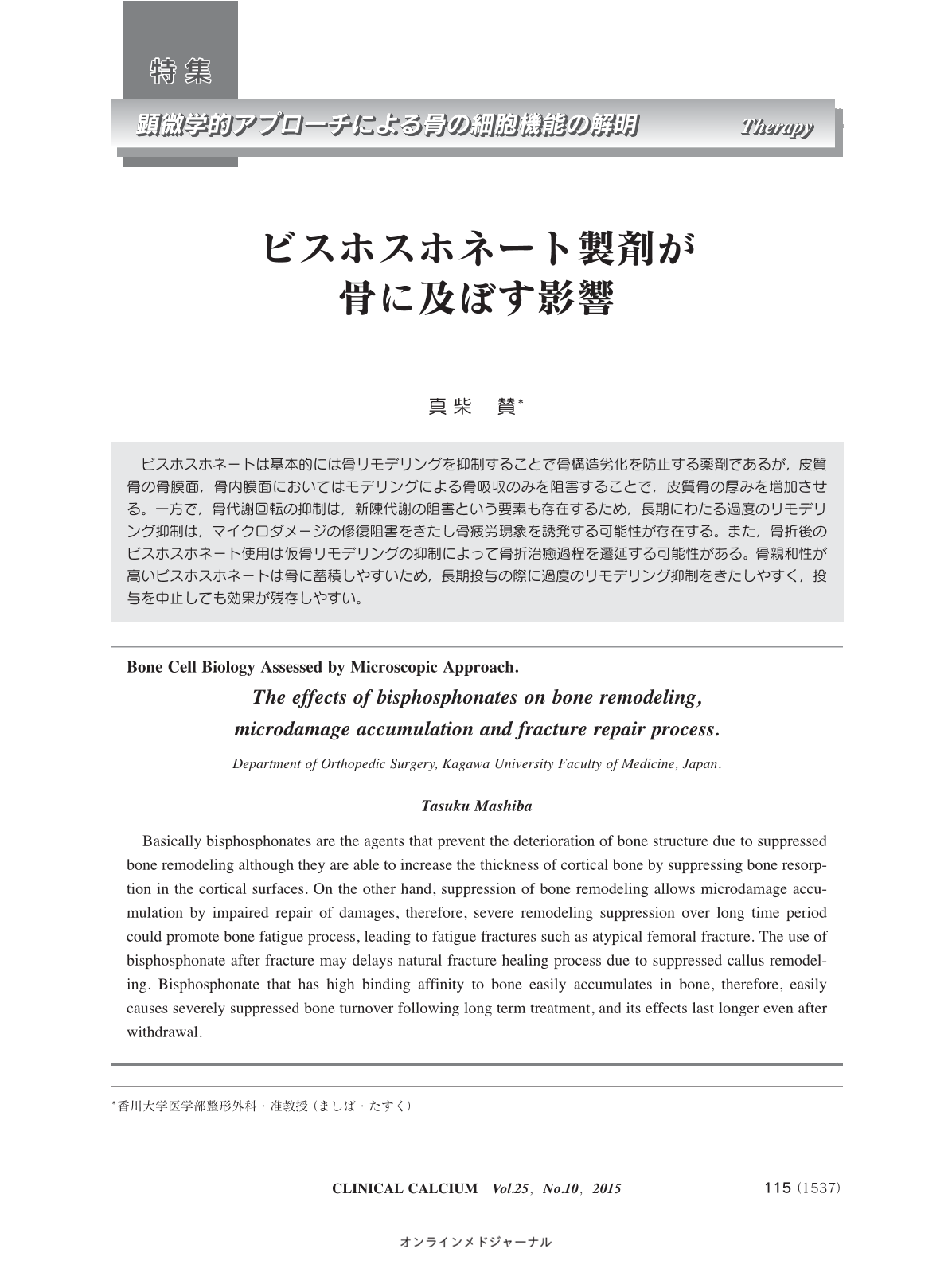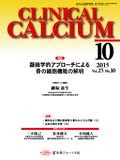Japanese
English
- 有料閲覧
- Abstract 文献概要
- 1ページ目 Look Inside
- 参考文献 Reference
ビスホスホネートは基本的には骨リモデリングを抑制することで骨構造劣化を防止する薬剤であるが,皮質骨の骨膜面,骨内膜面においてはモデリングによる骨吸収のみを阻害することで,皮質骨の厚みを増加させる。一方で,骨代謝回転の抑制は,新陳代謝の阻害という要素も存在するため,長期にわたる過度のリモデリング抑制は,マイクロダメージの修復阻害をきたし骨疲労現象を誘発する可能性が存在する。また,骨折後のビスホスホネート使用は仮骨リモデリングの抑制によって骨折治癒過程を遷延する可能性がある。骨親和性が高いビスホスホネートは骨に蓄積しやすいため,長期投与の際に過度のリモデリング抑制をきたしやすく,投与を中止しても効果が残存しやすい。
Basically bisphosphonates are the agents that prevent the deterioration of bone structure due to suppressed bone remodeling although they are able to increase the thickness of cortical bone by suppressing bone resorption in the cortical surfaces. On the other hand, suppression of bone remodeling allows microdamage accumulation by impaired repair of damages, therefore, severe remodeling suppression over long time period could promote bone fatigue process, leading to fatigue fractures such as atypical femoral fracture. The use of bisphosphonate after fracture may delays natural fracture healing process due to suppressed callus remodeling. Bisphosphonate that has high binding affinity to bone easily accumulates in bone, therefore, easily causes severely suppressed bone turnover following long term treatment, and its effects last longer even after withdrawal.



